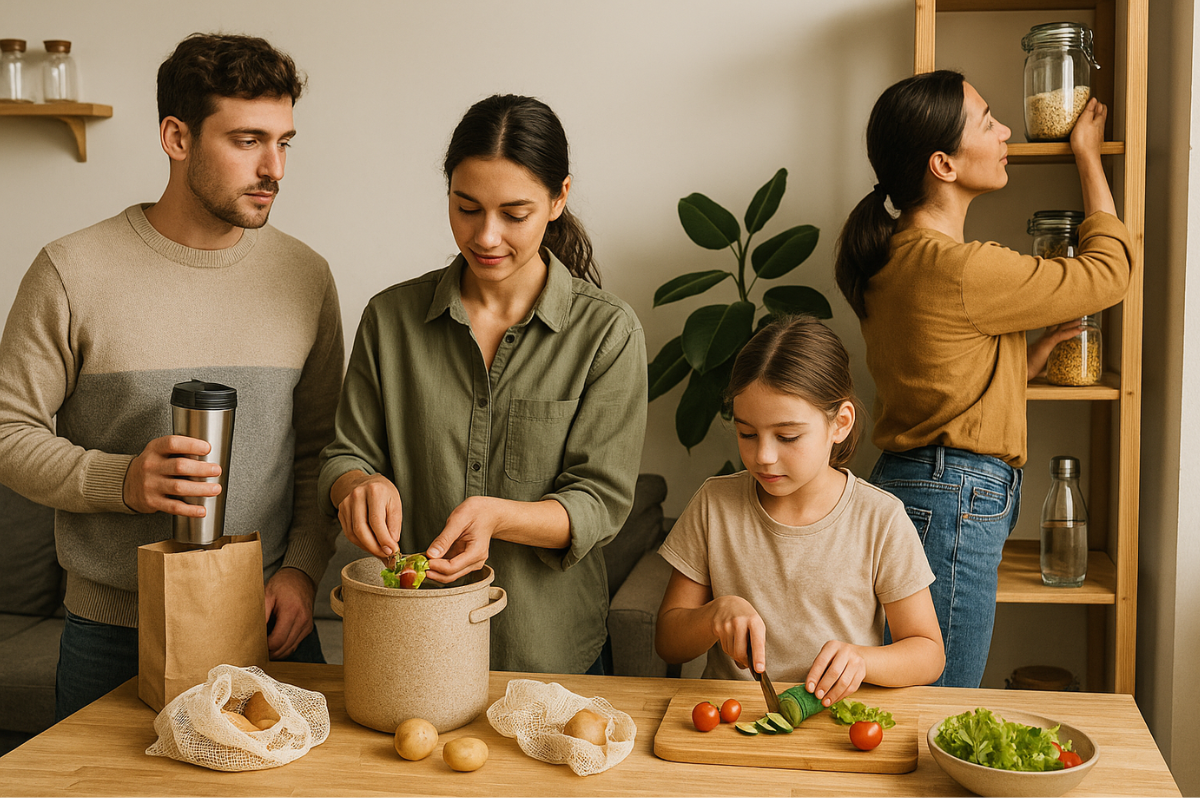The idea of going low-waste can seem intimidating at first. Social media often shows people fitting a year’s worth of trash into a glass jar, living completely plastic-free, or making everything from scratch. While these stories are inspiring, they can also feel out of reach.
The truth is, living a low-waste lifestyle is about progress—not perfection. You don’t have to do everything at once. You just need to start, one step at a time.
Understand What Low-Waste Really Means
Low-waste living is not about eliminating every piece of trash from your life. It’s about reducing unnecessary waste, choosing reusable and sustainable options when possible, and making intentional decisions.
At its core, it means:
- Reducing consumption
- Reusing what you already have
- Recycling responsibly
- Composting food and organic waste
- Supporting circular, ethical systems
It’s a mindset shift, not a rulebook.
Start With an Audit
Before making changes, look at what you already throw away.
Try this:
- Keep track of your trash for 3–5 days
- Identify recurring items (plastic wrap, food packaging, paper towels)
- Take note of what could be reused, replaced, or eliminated
This gives you a clear, personalized starting point.
Make One Change at a Time
Trying to change everything overnight will likely lead to frustration. Instead, tackle one area of your life, then move on when it feels natural.
Good first steps:
- Use a reusable water bottle
- Bring your own shopping bags
- Say no to plastic straws
- Switch to bar soap
- Start composting kitchen scraps
Each small change is a building block.
Use What You Already Own
Low-waste living doesn’t mean throwing away all your plastic and buying fancy bamboo alternatives. That would be wasteful.
Do this instead:
- Reuse your plastic containers
- Turn old clothes into rags
- Repurpose jars for bulk storage
- Upcycle or donate items
Use things until the end of their life—and then replace them mindfully.
Shop Second-Hand and Borrow First
Before buying something new, ask:
- Can I borrow this from a friend?
- Is there a second-hand version available?
- Do I really need it?
Shopping less is one of the most sustainable choices you can make.
Build a Low-Waste Toolkit
Once your old items wear out, start replacing them with long-lasting alternatives.
Useful tools:
- Cloth produce and shopping bags
- Stainless steel or bamboo utensils
- Silicone food storage bags
- Beeswax wraps
- Refillable water bottles and coffee cups
- Safety razors and reusable cotton rounds
You don’t need everything at once—just build your kit over time.
Focus on Food and Packaging
A huge part of household waste comes from food and how it’s packaged.
To reduce food-related waste:
- Buy in bulk
- Choose items in glass, paper, or compostable packaging
- Bring your own containers to the store
- Plan meals to avoid overbuying
- Freeze leftovers or meal prep portions
Food waste is often the easiest and most visible place to start.
Compost What You Can
Even if you don’t have a garden, you can compost at home or through community programs.
Options include:
- Countertop compost bins
- Bokashi systems
- Worm composting
- Local drop-off points
Composting turns food scraps into gold for the soil and keeps them out of landfills.
Keep It Practical
Perfection is not required—and stressing over every piece of waste can lead to burnout.
Remember:
- You don’t have to be zero-waste to be impactful
- Your mental health and time also matter
- Prioritize changes that make sense for your lifestyle
- Share what you learn, but never judge others
Sustainability should empower—not overwhelm.
Progress Over Perfection
Every step toward low-waste living counts. When millions of people reduce some of their waste, it makes a greater impact than a few people doing it perfectly.
So start with what’s manageable for you. Celebrate your small wins. Learn as you go. And know that each reusable item, each composted scrap, and each skipped disposable is part of building a better world.
